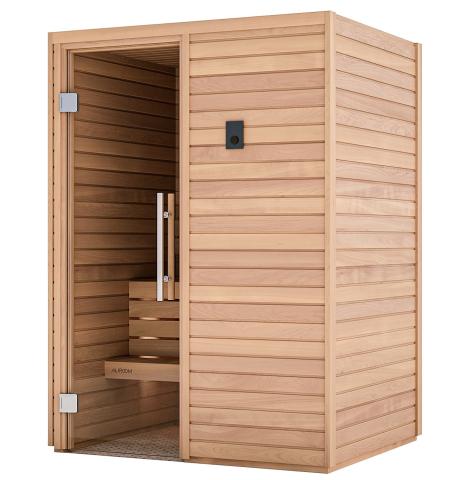What Does Traditional Sauna Mean?
What Does Traditional Sauna Mean?
Blog Article
All About Traditional Sauna
Table of ContentsNot known Details About Traditional Sauna What Does Traditional Sauna Do?9 Simple Techniques For Traditional SaunaTraditional Sauna Fundamentals ExplainedThe 4-Minute Rule for Traditional Sauna
A lot of the weight shed in a sauna is water loss and is re-gained upon rehydrating. However, undeniably sauna can be a fundamental part of a healthy and balanced weight management program. To consider the differences in between standard and IR saunas, I will certainly separate these into proven, academic, and produced differences.Hence, the best factor in the saunawhich is at the ceiling directly above the sauna heateris generally between 185 and 190 F. Claims that a conventional sauna surpasses 200 F is simply not real and not appropriate for electrical saunas sold in the US. The temperature level for a far-infrared sauna is usually set between 120 and 140 F; nonetheless, unlike the traditional sauna, the goal in and IR room is not to attain a heat.
Due to this, the temperature difference is nearly unimportant, given that excessive sweating leads to both sauna kinds, but the method of warming the body is different. In an IR sauna the bather will certainly really feel hot and will certainly sweat profusely, yet at much reduced temperatures (Traditional Sauna). Thus, if the goal is to invest longer time periods in the sauna, the IR sauna is an excellent selection
When a standard sauna has been appropriately heated, the sauna walls are cozy, the air temperature level has accomplished established temperature level and the rocks are very heated. As an intriguing side note, the heated wall surfaces and the rocks are emitting far-infrared warmth, integrated with the warmed air, to create an "covering warmth".
Some Known Details About Traditional Sauna

When the high temperature level is achieved, the elements cycle on and off to keep the high temperature level. Most traditional sauna customers enjoy putting water over the rocks to develop steam to raise sauna moisture degrees. The advantages of pouring water over the rocks consist of: making the space a lot more comfortable, dampening the nasal passages, and allowing the usage of aromatherapy by blending crucial oils with the water.

When the power goes into the body, it creates the body temperature level to boost and eventually leads to sweat. In an infrared sauna it is essential for the emitters/heaters to continue to be on practically constantly. Because there is no mass of rocks to maintain warmth, the sauna will certainly cool if the emitters closed off.
As stated above, the sauna bather in an infrared room intends to position himself in front of running emitters to obtain maximum gain from the warmth. The home heating time for both rooms can be really various, depending upon how the spaces are used. For a traditional sauna, a bather needs to enable 30-40 minutes for the space to achieve a wanted temperature level and to appropriately pre-heat the rocks.
Traditional Sauna Things To Know Before You Get This
A well built sauna will normally achieve a temperature level of 150-160 F in concerning 30-40 minutes. For hotter temperature levels, pop over to this site the space might need to warm for a longer period.

Traditional saunas tend to be bigger (hence make use of even more electricity) than infrared saunas, although traditional saunas are absolutely available in one and two person sizes too. For a two-person typical sauna, 5x6 or 5x7 dimension is most preferred. The leading bench can conveniently seat 2 or three people and is likewise long sufficient to relax throughout the sauna session.
The 10-Minute Rule for Traditional Sauna
The average price per kWH of electrical power in the U.S. is roughly $0.11, so a 4.5 kW heater will cost roughly $.50 to run for one hour, if the heating system runs continuously for one hour. Normally a sauna heater will certainly compete 75% of the first hour and 50% of succeeding hours on because the components cycle once the set temperature level is accomplished.

There is a rarely reviewed distinction in the social experience between the two spaces. While our society has actually shed some of the social benefit of the typical sauna experience, it can be really socially fulfilling (Traditional Sauna). From family time in the sauna, to heart-felt conversations with considerable others, to sauna partiesthe conventional sauna experience can result in intimate interacting socially
More About Traditional Sauna
A lot of greater end infrared rooms include tinted light therapy, sound systems and full-glass fronts.
Report this page